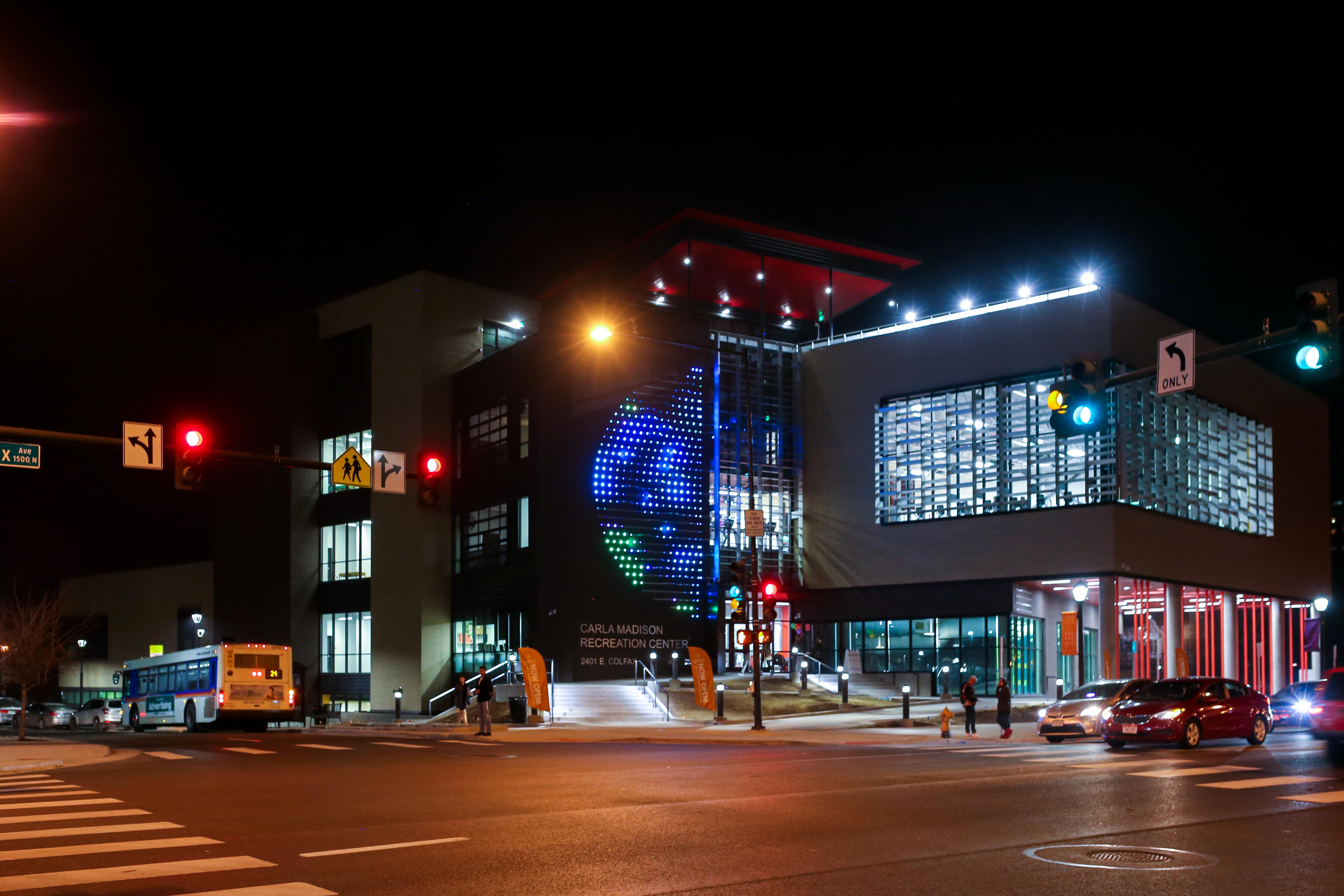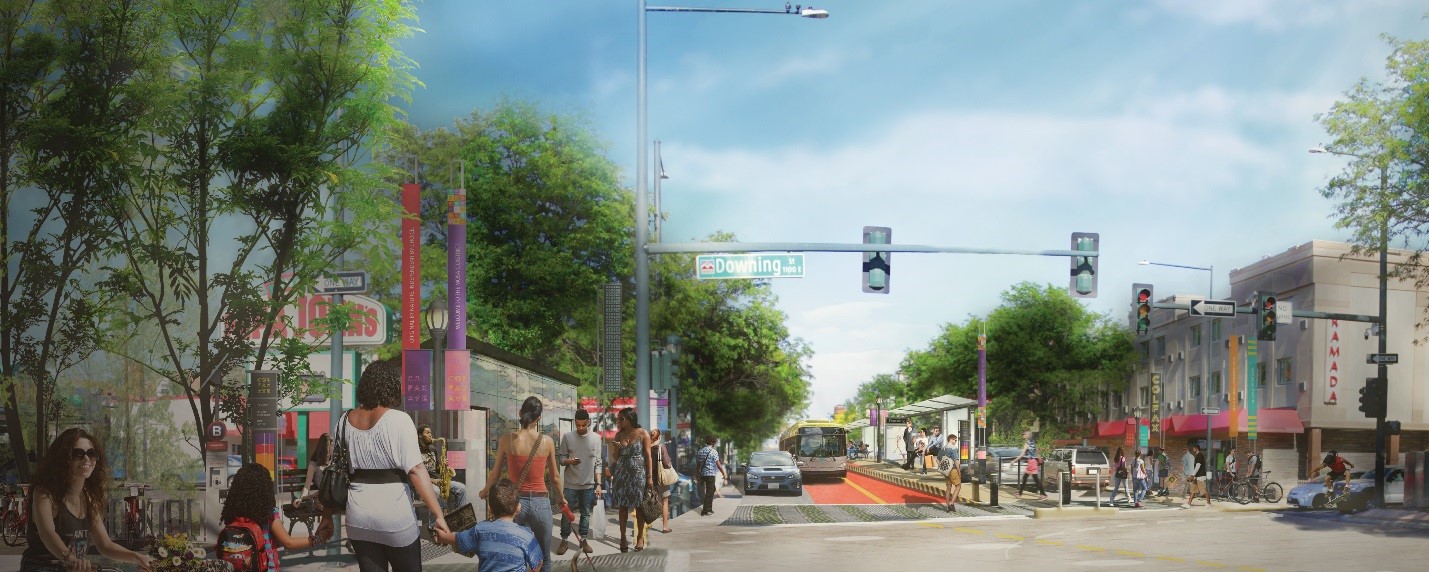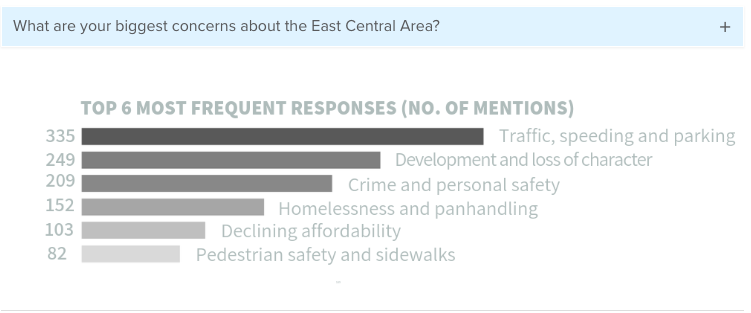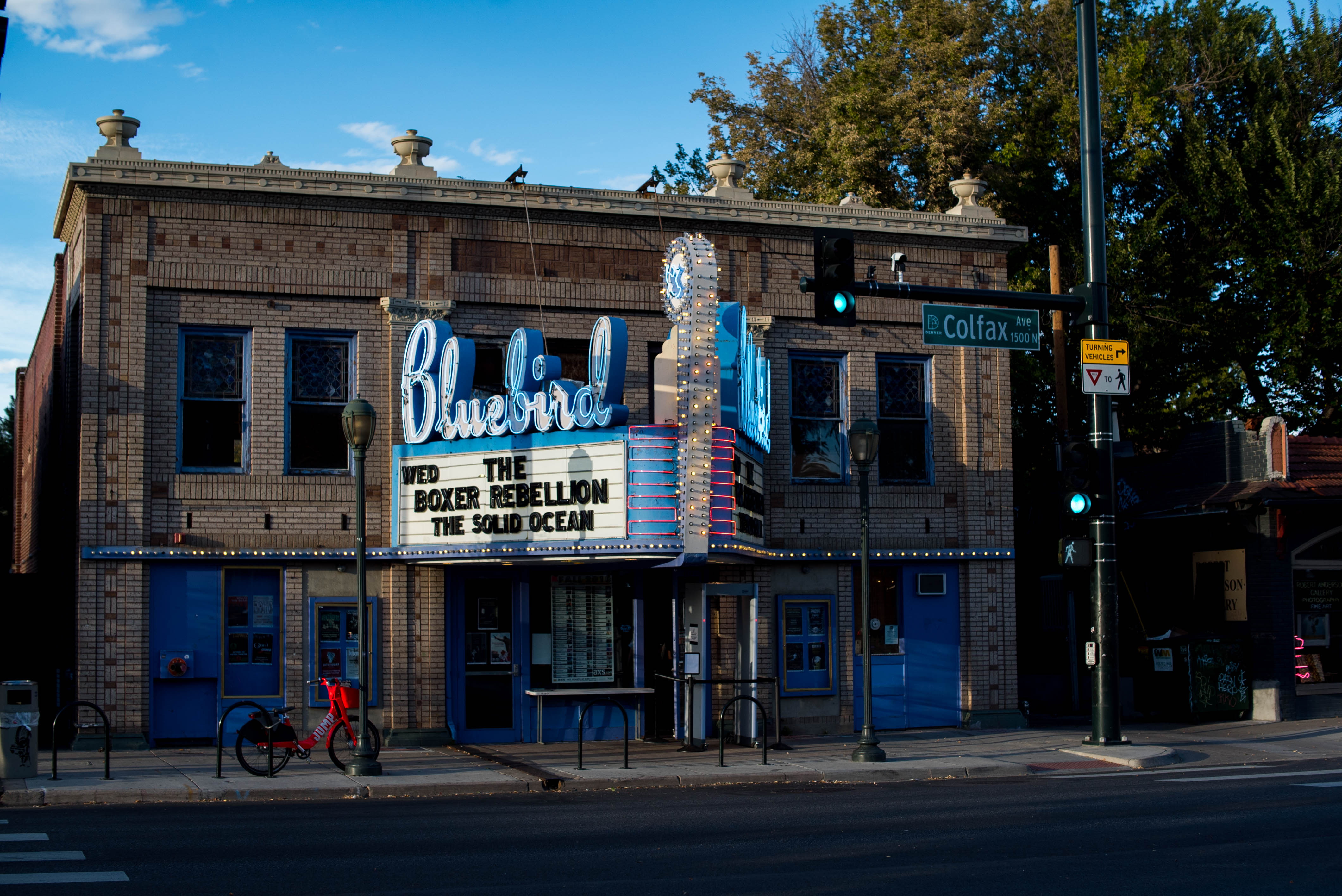This is the third installment of a new series where we will examine the possible changes to Denver’s neighborhoods in the next five years. To read the others before this, go here for West Colfax, go here for Sun Valley and here for RiNo.
Colfax Avenue was one of the main highways to and through Denver before I-70 or I-25 ever existed, running from Golden all the way to Strasburg — a place located further east than the airport. Known as the “Gateway to the Rockies,” Colfax Avenue not only brought people to Denver, it always connected various iconic places through the Mile High City, even during its most wicked days.
East Colfax is even more historic than West Colfax. Not only did the eastern stretch get paved before the western side, but it also holds more history in the sense of being a neighborhood. Where West Colfax was always more focused on small businesses, East Colfax was first and foremost about the residents. That is, until the beginning of the decline in the ’60s, when residents had to start traveling further from Colfax for their basic amenities, like groceries, health care and open space. Now, as we look ahead at the future of East Colfax, we are seeing an area that will regain its safe neighborhood status, but not at the expense of its notorious ‘character’ and ‘grit.’ It will still be the place to see concerts, get a tattoo and eat food from all over the world, but it will also be a major multi-modal spine of transportation, where bikers and pedestrians can feel as comfortable as cars. Although the developments on East Colfax seem to move at a slower pace than other neighborhoods in Denver, it’s still going to transform in the next five years.
Making it a Safer, Cleaner Place
Run-down is a term used in many conversations about East Colfax, but there are quite a few organizations working to change that descriptor. Mainly the Colfax Avenue Business Improvement District (BID) — the boundaries of which are from Grant to Josephine and from 14th to 16th — is spearheading the renewal, working on the momentum that was first started by business owners and concerned residents nearly 30 years ago.
With a successful pilot program in the summer of 2018, Colfax Works is looking to continue operating their “crews” — which offer those experiencing homelessness paid jobs and support services. Crews work Tuesday through Friday with tasks like cleaning up graffiti, removing trash, power washing and small landscaping projects. The organization is run by the Colfax BID with the help of Denver Human Services and Bayaud Enterprises. DHS and Bayaud are the ones behind Denver Day Works — a citywide pilot program with the same goals as Colfax Works. Local businesses have been happy to support the Colfax initiative and continue to show that support by donating lunches to the crews. Because the program was only a pilot in the summer of 2018, the organization is currently waiting for approval to continue the services year round, starting in 2019.
The communications and program director of the Colfax BID, Michelle Valeri, explained the benefits of the Colfax Works program, “We’re able to provide enhanced maintenance service to the district while also giving people a job and the supportive services they need to get back on track. Our crew is extremely hard-working and motivated, and they really take pride in what they do for the community.” She adds that the vision for Colfax Works extends beyond the 22-block stretch it currently serves, as a model for other neighborhoods in and around Denver. Since the idea for Colfax Works started with Washington D.C’s “Ready, Willing, and Working” program, Valeri believes leading by example could be the best way to spread the message.
“There has been a clear difference in the cleanliness of the street since the pilot project began in June,” Valeri continued. “We’ve also had a volunteer organize a monthly Colfax Clean up and he’s said that there is so much less to pick up since the CW crew has started. But, we also want to make clear that this program is just as much about long-term benefit as it is to enhance our street cleaning.”
The Colfax BID also has grand plans for improving the stretch of road for pedestrians so that it is a welcoming place to take a stroll, with a budget of 20 million dollars. The master streetscape plan was implemented last year, where the BID aims to install wayfinding signs, enhance crosswalks, install landscaped medians and encourage store owners to have outdoor patio seating and clean storefronts. “We know what it’s like to have a place that is clean and safe but also unique. Colfax isn’t a strip mall and there’s a reason for that. It’s a place a lot of people come to — from within the neighborhood and without. And we are excited about what all is coming in the streetscape plan, but also the things to keep Colfax Colfax,” said BID president Sean O’Connell.
According to the plan, some of these improvements are scheduled to happen in the next year, although some of it will rely on individual property and business owners — like making sure snow is shoveled off of sidewalks. Overall, the BID wants the streetscape plan to follow certain themes that are inherent to Colfax, especially its storied history. To do this, they plan to include art and other creative mechanisms to tell the story of the “wicked” avenue at public transportation stops, at crosswalks and in other landscaping improvements. One of the smaller improvements they will install in February 2019 are banners to hang from street lights that have been designed by three local tattoo shop artists, who work in tattoo shops on East Colfax.
Another aspect of keeping Colfax safe and clean relies on the success of a new program spearheaded by Councilman Albus Brooks of District 9. His hopes are to pass a bill to introduce “supervised use sites” into the city that will provide clean needles and safe facilities for people experiencing addiction. According to a September 2018 newsletter provided by Brooks, he feels this kind of bill is increasingly necessary when Denver’s second leading cause of death is by an overdose. This is particularly relevant to East Colfax because many of Colfax’s iconic landmarks — like Civic Center Park — are currently unsanctioned public use sites and have been littered with used needles as the epidemic spreads. “We have unsanctioned sites all over the city. They are in our parks, in our rivers, in our public bathrooms and they’re at the central library,” Brooks explained. “We think that’s unfair to the public, that’s a public health crisis, and supervised use sites can cut down on that danger.”
Recreating A Neighborhood

Historically, East Colfax was a residential area. When it became the main highway through Denver, much of the eastern side was converted to commercial spaces, with storefronts inserted onto houses. Both sides of East Colfax are lined with residential units, and when the purpose of East Colfax changed from a place to live to a thoroughfare, the neighborhood atmosphere resided. In 2004, 11 city council members unanimously voted on focusing the city’s attention on revamping East Colfax — crime was rampant, traffic was congested and the people who lived nearby were stuck in the midst of it all. That decision led to the facilitation of developments along the corridor that would ultimately benefit the neighborhood.
A few years after that decision by the city, two Denver staples — Tattered Cover Bookstore and Twist and Shout Records — asked a local real estate developer, Charles Woolley, to help them find more suitable leases that could help them sustain their business during a time of retail decline. An old theater on East Colfax and York proved to be the perfect spot — it fulfilled the independent business’ need for long-term, low-fixed lease rates. That complex now hosts several other local and thriving businesses, including The Chocolate Lab and the headquarters of the Denver Film Society, the Sie FilmCenter.
“As a person who lives in the neighborhood, I always drove down Colfax but I didn’t hang out there,” Woolley explained, when asked why he was helping to develop East Colfax. “It’s equidistant for me to go to Colfax and Cherry Creek and I wondered, ‘Why is Colfax so bad when Cherry Creek is so vibrant?’ … I think it’s a good place to invest in real estate where you can really add value into what has otherwise been a forgotten street. There is still a lot of grit, which I think is cool, but it’s a commercial street surrounded on both sides by strong neighborhoods with great housing stock and a good density and diversity of the population.”
This last year, Woolley’s company purchased a building near the Sie FilmCenter complex on the corner of Colfax and York called the Savageau Building (after the real estate developer who built it in 1930), where the art gallery Abend used to reside. After renovating the space, the development company rented different segments of it to an assortment of small businesses, including a women’s clothing shop, a florist, home furnishing store and an event space. Then, just a few months ago, they purchased the plot adjacent to the Savageau building that previously was used by the Grand China restaurant. That plot will become a Choice Market, which Woolley described as “7/11 meets Whole Foods” and might soften the struggle that many on East Colfax live with every day — finding fresh food. “There is not really a fresh food option in the corridor,” Woolley continued. “I suspect the plot is going to be a good location for [Choice Market] to do this. In addition to having organic vegetables and fresh made grab-and-go, they have delivery as well. They will also have a fuel station, an electric vehicle charging station, a bike share. I think it will be a real community resource.”
But it’s important to those connected to East Colfax that with any developments for retail or restaurants or film centers, there is also new housing that includes affordable options, especially since the eastern stretch has been a haven for homeless and transient populations for decades. In an announcement made on October 11, 2018, the city’s Office of Economic Development asked for development partners on two lots on East Colfax, with the requirement that the finished product be “a successful mixed-use development that includes affordable rental housing and commercial uses,” according to the official press release. At least half of the available housing units in the development must be affordable to those who earn up to 80 percent of the average income in the area.
The largest obstacle for developing East Colfax — and yet, on the other hand, the saving grace of its renowned “character” and “grittiness” — is finding the right sweet spot between all the zoning codes, historic requirements and lack of financial support in the area. It is because of those hurdles that East Colfax hasn’t seen the rampant changes that other neighborhoods in Denver are currently experiencing and also why the development must be done using holistic thinking and approaches. Therefore, housing developed with the help of the city may be the only way that affordability is accounted for in future Colfax developments, but in the meantime, the commercial aspects of a healthy and vibrant neighborhood are already underway due to the resourcefulness of private investors and businesses.
Lessening Traffic Woes

Colfax surpasses any other bus corridor in the region in the number of riders. The 15 and 15L routes that operate on Colfax transport a combined seven million annually — or around 22,000 every weekday. Those numbers indicate one major point — many of the commuters who live and work near or on Colfax use public transportation as a necessity. But, since the transformation of Colfax from a residential neighborhood to a highway did not account for the traffic we now deal with, the congestion has become a major problem. Not only are transit times lengthened by the bottlenecking of cars along the four-lane avenue, but pedestrians and bike riders are constantly put in danger.
The Denver Vision Zero Coalition is a group of organizations who are supporting the goal of “Vision Zero” by the city and county — or zero traffic fatalities or serious injuries. Colfax Avenue — on both the east and west sides — is a serious concern to the coalition due to its inherent danger, especially for pedestrians and bike riders. On East Colfax and Washington Street at the beginning of October 2018, Denver Vision Zero commissioned the street artist group So-Gnar Creative Division to paint an enormous mural that portrays the hopes for a future walkable-bikeable-shareable Colfax. This is only one of the many projects that Denver Vision Zero has curated or facilitated in order to improve safety and mobility in the city, but we are expecting many more projects like this on the Colfax corridor especially in the coming years.
Councilman Brooks named the improvement of transportation as the most pivotal and necessary step in Colfax’s forthcoming transformations. “For Denver to survive we are going to have to become a multi-modal city and I think not everybody agrees with that or understands that but the writing is on the wall. It’s not so much an ideology, it’s facts. If we keep accommodating the car, we will be stuck. Stuck in gridlock. We have staff people who actually look at car trips and see how many cars can be handled on the roads. We have to have the bus rapid transit options, we have to have pedestrian access points, we have to have bicycle routes. A huge priority is to have a multi-modal city.” He added specifically about East Colfax that “sometimes, it seems like people crossing Colfax are playing Frogger, and it’s dangerous. Kids who go to East High School have been hit on that road.”
In the next 10 years, this stretch is at the forefront of infrastructure priorities for the city because ridership is expected to double to 50,000 per day in 2035. The Bus Rapid Transit System (BRT) has been accepted as one of the most reasonable and sensible solutions to this influx, with a budget of 75 million dollars. The BRT will operate mainly between the Auraria Campus and the Anschutz Medical Campus, with outlying routes continuing to the east to Aurora Metro Center and to the west to the Federal-Decatur Station. It will operate 24 hours a day, with buses coming through every five minutes during peak hours and every 30 minutes late at night. Included in the planning for the BRT are upgraded bus stations with upgraded shelter, lighting, security features and real-time arrival information as well as public art possibilities. BID president O’Connell mentioned in the yearly meeting that the goal is to complete the BRT and much of the streetscape plan at the same time, rather than repeatedly ripping up Colfax for construction.

The push for better transportation and safety along Colfax doesn’t just come from the higher-ups, though. Neighborhoods surrounding Colfax on the east put traffic, speeding and parking at the top of their concerns, by a large margin. The East Central Area Plan surveyed over 1000 residents in 2017 and have been using their feedback to steer decisions since. Sometime next year, that plan will have more concrete stepping stones to move forward with bringing plans to fruition, but until then, the results of the survey are interesting and can be found here.
Keeping The “Grittiness”

In many ways, Colfax’s grittiness started in the ’60s, alongside the free love movement that brought hippies to Civic Center Park. It also started in part due to the city and the efforts to gentrify downtown Denver, pushing transients and single-occupancy renters out of areas like Larimer Square and into the eastern stretches of Colfax. But the best way to describe the character of East Colfax today might be the way that Councilman Brooks — a self-described “Colfax Connoisseur” does. “On Colfax, you will, on any given day, bump into a millionaire, a homeless person, a soccer mom, a headbanger going to a show, some high school kids — it is literally where you can come and feel the soul of Denver. That’s hard for me to say because there is a different soul of Denver you feel on Welton Street, in Five Points, but on Colfax, you get to really experience the soul of our city and the grittiness of our city and it’s the best.”
This remark about “grittiness” is common, when people are asked to comment about Colfax’s character or vibe. In an article by Denverite, Monica Martinez of The Fax Partnership remarked, “people like the grit of Colfax. People like neon signs. Even the motels, people talk about reusing the motels, ‘Don’t tear them down because they’re a historical artifact of what this street was at one time.’ Making Colfax mixed-income is important… There’s housing for all types of people, and in an urban environment, that’s my definition of edgy.” Valeri, of the Colfax BID described it in her own way, “We’ve done a lot of focus groups over the last few years, and one thing is clear — people REALLY love the ‘grit’ of Colfax. Everyone has a Colfax story. We’re all about embracing and preserving the character of Colfax while also making it a welcoming place for everyone.”
So even though “keeping the grittiness” might seem at odds with some of the other changes in Colfax’s future (like recreating a neighborhood or cleaning it up) the bottom line is that the people who love Colfax and want to live, work and play there, love the “grittiness.” In order to sync up the beautification and improvements with the hardline stance of keeping the gritty character, those involved with changing East Colfax must go about it in a unique way. Some of the tactics include preserving neon signs — a souvenir from the decades before I-70 was built — and supporting smaller, locally-owned businesses who will embody the grit in their own way.
—
East Colfax is on the precipice of many changes, although for now those changes are slow-moving. Because Colfax Avenue is seen as such an important part of Denver’s history, modifications that would normally meet little resistance in other neighborhoods will have to undergo more rigorous requirements to occur. But, the bottom line is that Colfax is once again becoming a major “Main Street” in Denver, with thriving small businesses, a focus on art and culture and a need to keep it safe for all walks of life. In the next five years, East Colfax will proudly call itself the soul of Denver, without the embarrassing blisters of crime, traffic and derelict buildings marring its reputation.
Editor’s note: when this article first published, Charles Woolley’s name was misprinted.






Excellent article – we were just back in Denver after 28 years in Europe (still have a home in Congress Park). It was great to see some of the improvements along Colfax as well as the continued ‘grittiness’ having not lost it’s character.
Minor corrections to a good article:
1/ Some of the illustrations show buses stuck in bus traps on the side of the avenue. When Wheat Ridge engineered that on West 38th Avenue, Rte 38 buses were slowed down by 10% as drivers jockeyed in and out. Consequently ridership declined and RTD reduced peak service.
2/ The article states that East Colfax does not have 24-hr service. That is only true of Rte 15Ltd. Rte 15 ‘owl’ service was restored in 1983 between Downtown Denver and Billings Street in Aurora.
Thank you for reading! The illustrations with the buses in “bus traps” on the side are referring to the streetscape plan, which is going to start being implemented next year. The BRT rendering shows the bus in the central lane, as per the BRT plan. I corrected the sentence that referred to the current buses not running 24 hours – thank you for catching that.
Great article!
One small error: the Savageau Building is at Colfax and York, not Race.
It would be a shame if the new Choice Market means tearing down such a lovely building.
Hi Michael, thank you for the correction! It’s been updated in the article.
Bicycling is mentioned in the article, but I do not see any bike lanes in the illustrations. What sort of bike infrastructure is under consideration? In many cities around the world, the addition of bike lanes can significantly help businesses along the routes.
Hi Nicole,
That’s a great question. Unfortunately, as the article states, there are only hopes and visions for a bikeable East Colfax. There are a lot of groups focused on it, like Vision Zero Denver, who might be able to answer your question with more certainty. It never hurts to let your city council representative know about your concerns as well.